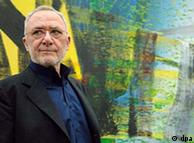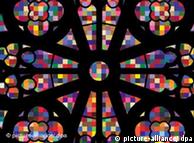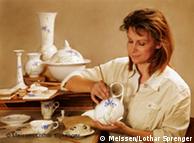
中國著名民主人士章士釗的養女、毛澤東的英文教師、中國前外長喬冠華的夫人章含之1月26日在京病逝,享年73歲。
據中國媒體報道,章含之的女兒洪晃說, 2月1日將在八寶山革命公墓舉行章含之追悼會與遺體告別式。
一個多月前章含之因為腎病引發肺部缺氧住進北京朝陽醫院,但終於醫治無效。
生平不凡
章含之1935年生於上海。她的養父章士釗是民國時代的大律師、辛亥革命的元老。
據稱,在民國段琪瑞政府中擔任司法兼教育部長的章士釗曾給當時擔任北京大學圖書館任職員、為留法勤工儉學運動籌款的毛澤東批了兩萬大洋,成為兩人後來幾十年裡私人交往的一個背景。
而章含之1960年畢業於北京外國語學院英語系研究生班。1964年,她成為毛澤東的英文老師。 
章含之1971年調入中國外交部。兩年後,和後來擔任中國外交部長的喬冠華結婚。
她20世紀70年代參與了中美建交會談、尼克松訪華、上海公報談判等一系列中國重大外交活動。並曾出席聯合國大會任中國代表團副代表。
作家生涯
1976年,毛澤東去世、"四人幫"下台後,喬冠華被免去外交部長的職務。章含之也因此離開中國外交事務的核心。
1994年,章含之加入中國作家協會。
章含之出版的回憶錄《跨過厚厚的大紅門》透露了大量中國文革晚期政壇及外交大事的細節。
但一些中國歷史學者認為章含之的一些敘述是孤證不立,有待史家進一步考證。
章含之曾經翻譯長篇小說《尋歡作樂》(﹝英﹞毛姆著),著有散文集《我與喬冠華》、《風雨情》、《我與父親章士釗》等。
毛澤東英語教師章含之逝世
2008年 1月 28日 星期一
路透北京1月27日電---曾擔任毛主席英語教師的女外交官章含之周六逝世,結束了她多姿多彩的人生。
新京報周日援引章含之女兒洪晃的話說,章含之因肺部疾病去世,終年73歲。她的遺體告別儀式將在八寶山革命公墓舉行。
在1970年代中美關係正常化的過程中,外交官章含之是親身參與者之一。
章含之1935年出生于上海,是一位女店員和富商的私生女,後來成為律師章士釗的養女。
1963年,正在北京一所大學擔任英語老師的章含之陪父親一起參加毛澤東的生日宴會。毛澤東邀請她擔任自己的英語老師。從此,章含之成為毛澤東的老師、翻譯和知己。
“主席讓我第二天就開始上課!我激動地說不出話來了。我要給一位偉大領袖、十億人民心目中的神上課,”1999年《時代》周刊援引章含之的話說。
但是,英語課程後來突然中斷,章含之也受到了文化大革命的影響。直到1970年代初期,正在尋求發展中美關係的毛澤東指派她去外交部工作。
章含之參與了毛澤東和周恩來與美國總統尼克松,以及其外交政策顧問基辛格的會談。隨後,她又隨中國代表團訪問美國。
章含之在1970年代與丈夫洪君彥離婚,後嫁給當時的中國駐聯合國首席代表喬冠華。喬冠華後來成為外交部長。
近年來,章含之陸續出版了幾本回憶錄,在全國擁有相當的知名度。(完)
cnn
章含之さん死去 毛沢東の英語教師
北京(AP) 中国の外交官で、毛沢東国家主席(当時)に英語を教えた章含之さんが26日、肺疾患のため北京市内で死去した。73歳だった。国営メディアが伝えた。
葬儀は25日、中国共産党エリートの墓所である八宝山革命公墓で営まれる。
上海生まれ。名家の子息の私生児として生まれ、著名弁護士の養子になった。1949年に一家で北京に移住し、4年後に北京外国語学院大学院を修了し、教鞭を取った。
50年の中華人民共和国の建国1周年記念パーティーで毛主席と初対面。63年、毛主席の70歳の誕生日に再会し、毛主席自身から英語を教えてくれるよう懇願され、快諾した。
章さんの回想によると、毛主席は政治用語を中心とするボキャブラリーや語法の学習に熱心だったが、文法や発音矯正には全く関心を示さなかった。毛主席が好 物の紅焼肉を章さんに振る舞い、章さんが政治の中心地・中南海の外の出来事を毛主席に伝えるなどして、2人は親交を深めた。
64年に文化大革命が始まると英語の授業は途絶え、章さん一家は迫害を受けたものの、毛主席に度々窮地を救われたという。71年には中国外務省に入省して外交官に転じ、72年にはニクソン米大統領と毛主席の歴史的会談で通訳を務めた。
中華民国(台湾)が71年に国連を追放された際の中国代表団にも名を連ねた。夫と離婚し、代表団を率いていた22歳年上の喬冠華氏と再婚したことで話題を呼んだ。
紐約時報
By DAVID BARBOZA
Published: January 31, 2008
SHANGHAI — Zhang Hanzhi, a former Chinese diplomat who once served as Mao’s English tutor and who also interpreted for President Nixon during his historic trip to China in 1972, died on Saturday. She was 72.
Zhang Hanzhi, a diplomat and interpreter, explained Chinese culinary art to Pat Nixon in Beijing in 1972.
Ms. Zhang’s death was reported in the state-controlled media, and her daughter, Hong Huang, a media entrepreneur in Beijing, posted a notice of the death on her popular blog.
A funeral is planned for Friday, at Babaoshan, the Beijing cemetery for the Communist Party’s elite.
Ms. Zhang, who was reared by a family with close ties to Mao, was selected by him to become a diplomat. She was a member of the Chinese delegation that traveled to New York in 1971, when Beijing took back its seat at the United Nations.
Two years later, she married the head of China’s United Nations delegation, Qiao Guanhua, who served as the country’s foreign minister from 1974 to 1976 and helped open the country to the West. The two traveled together for high-level meetings with United States officials, including George Bush, while he was United Nations ambassador and chief of the United States Liaison Office, as well as Secretary of State Henry A. Kissinger.
Ms. Zhang later wrote a best-selling memoir and became something of a celebrity in Beijing. Two years ago, she even played a small role in a movie alongside her daughter, Ms. Hong, herself a celebrity.
Zhang Hanzhi was born in 1935 to a Shanghai businessman and a shopkeeper who, after a dispute over who would raise the child, allowed her to be adopted by Zhang Shizhao, a lawyer and scholar who at one time was the country’s minister of education.
Among her adoptive father’s close friends was Yang Changji, who was both Mao’s college professor in Hunan Province and the father of his second wife, Yang Kaihui.
In 1918, Zhang Shizhao helped persuade Yang Changji to move to Beijing to teach. Mao followed soon after and found work at the library at Beijing University, where he began organizing revolutionary activities. A student group Mao led even got financial support from the Zhang family.
Zhang Hanzhi, a graduate of Beijing Foreign Studies University, said her own friendship with Mao began in 1963, when, at his 70th birthday, Mao greeted her and, learning that she knew English, asked that she serve as his private tutor.
She was 28, and not sure whether he meant it. A few days later, his office called.
“The chairman wanted the lessons to start the following day!” she recalled in an essay published in Time magazine in 1999. “I was dumbfounded. I was to teach the great leader whom over a billion people worshiped as their god.”
The tutoring, which involved informal talks about the outside world as well as English instruction, ended after a few months; in the early years of the Cultural Revolution, there was little contact with Mao, she said, except a few letters.
But in 1970, Mao summoned her again and asked her to join the diplomatic service. Soon after, she was working in the Foreign Ministry and interpreting for Prime Minister Zhou Enlai during Mr. Kissinger’s secret trip to China in 1971 and for Nixon during his 1972 visit, when the two countries re-established diplomatic ties and signed the Shanghai Communiqué, outlining bilateral relations.













 「面構(つらがまえ)」など大胆で個性的な画風で知られた日本画家の長老で、文化勲章受章者の片岡球子(かたおか・たまこ)さんが16日午後9時55分、 急性心不全のため神奈川県藤沢市の病院で亡くなった。103歳だった。葬儀は近親者で済ませた。喪主は弟邦三(くにぞう)氏。
「面構(つらがまえ)」など大胆で個性的な画風で知られた日本画家の長老で、文化勲章受章者の片岡球子(かたおか・たまこ)さんが16日午後9時55分、 急性心不全のため神奈川県藤沢市の病院で亡くなった。103歳だった。葬儀は近親者で済ませた。喪主は弟邦三(くにぞう)氏。




 カタカナの「ワ」をモチーフにして、「ケ」を組み合わせたデザインです。
カタカナの「ワ」をモチーフにして、「ケ」を組み合わせたデザインです。

